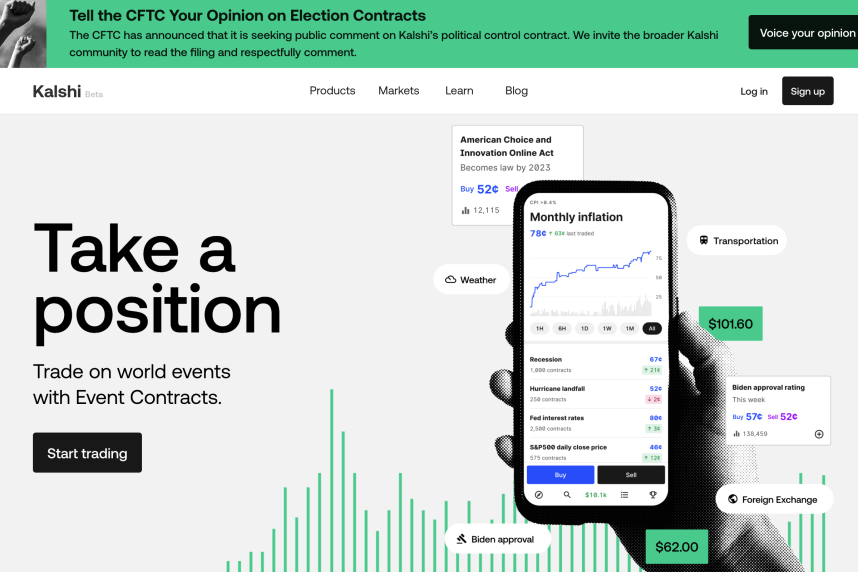Prediction Market Threat to Sportsbooks May Be Overstated, Says Analyst
Posted on: September 4, 2025, 11:29h.
Last updated on: January 6, 2026, 09:06h.
- Prediction markets are “more sizzle than steak,” says Jefferies analyst David Katz
- Derivatives exchanges are growing, but currently have minimal earnings power relative to online sportsbooks
- California/Texas thesis may be overhyped
Prediction markets are garnering plenty of attention, but the extent to which companies such as Kalshi and Polymarket pose competitive threats to online sports betting (OSB) operators may be overstated.

That’s the take of Jefferies analyst David Katz, who in a recent report, points out that while Kalshi and Polymarket trading volumes are surging, due in large part to exchanges’ expanded sports offerings, hype surrounding total addressable market (TAM) may be exaggerated.

“While reported prediction trading volumes will likely continue to grow due to the breadth available (entertainment, financials, elections, sports, etc), and we see a global potential TAM of >$100B, this greatly overstates the potential profitability of these markets,” observes the analyst.
Katz highlights an important, though arguably overlooked difference between the business models of companies like Kalshi and Polymarket and those of traditional sportsbook operators. Derivatives exchanges collect a fee each time an event contract is traded whereas sportsbooks are dependent on outcomes, but that doesn’t necessarily favor the former.
“The low fee structure of prediction markets implies a consumer benefit at the expense of OSB profitability. Further, core OSB business is driven by 1) breadth of offerings, including parlays (60% of US bets), and 2) ease of use/engagement, which are not comparable in prediction markets in our view,” adds the analyst.
Prediction Markets ‘More Sizzle Than Steak for Now’
The arrival of football season has brought a spate of prediction markets news, including Kalshi introducing parlays and player props, Robinhood Markets offering yes/no football contracts, and a partnership between Crypto.com and Underdog Fantasy, but a lot that could just be hype.
Katz says the current state of affairs for prediction markets vs. OSB is a case of “more sizzle than steak”, adding that if prediction markets’ volume was measured in fashion comparable to OSB handle, the former would look significantly less impressive.
Translation: Kalshi’s and Polymarket’s sports contracts businesses currently pale in comparison to DraftKings (NASDAQ: DKNG) and FanDuel parent Flutter Entertainment (NYSE: FLUT).
“To this point, we estimate that comparable US OSB handle from Kalshi and Polymarket combined was just ~$1.5 billion in 1H25, compared to $25.4 billion and $26.3 billion for DKNG and FLUT, respectively,” says Katz. “Furthermore, on this comparable handle, the prediction operators’ LSD hold implies a 1H25 net gaming revenue (NGR) of just ~$40 million, vs. $1.88 billion and $2.35 billion for DKNG and FLUT.”
California, Texas Access May Be Overhyped, Too
One of the often cited advantages of prediction markets is that the operators are regulated at the federal level, meaning they can court clients in all 50 states — a luxury not afforded to gaming companies, which are regulated by each state in which they do business.
That regulatory advantage has sparked conversation that derivatives exchanges will beat sportsbook operators to the punch in California and Texas, neither of which appear ready to approve sports wagering anytime soon. Kalshi and Polymarket are already garnering website traffic from the two most populous states, but the run-rate pales in comparison to what DraftKings and FanDuel would generate in handle in those states.
“We estimate that ~25% of Kalshi and Polymarket web visits are already coming from CA & TX, though this has only generated a run-rate of ~$1 billion/year in comparable OSB handle,” concludes Katz. “This compares to our prior estimate of $10 billion+ in OSB handle/year with full legalization, based on CA & TX populations and a GGR per cap estimate of $122.”
No comments yet